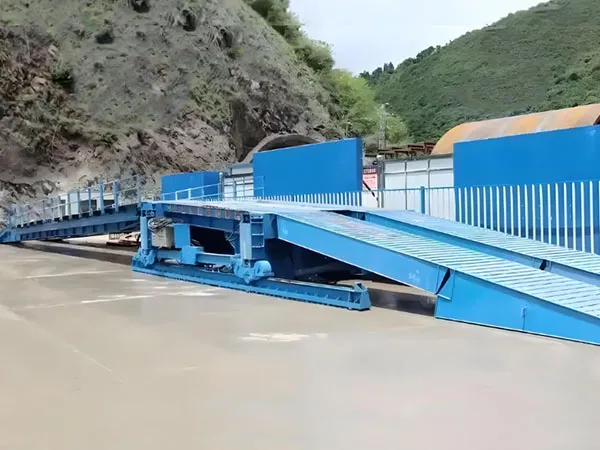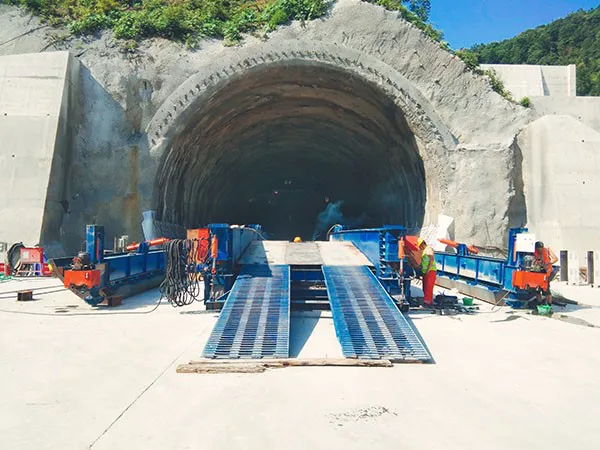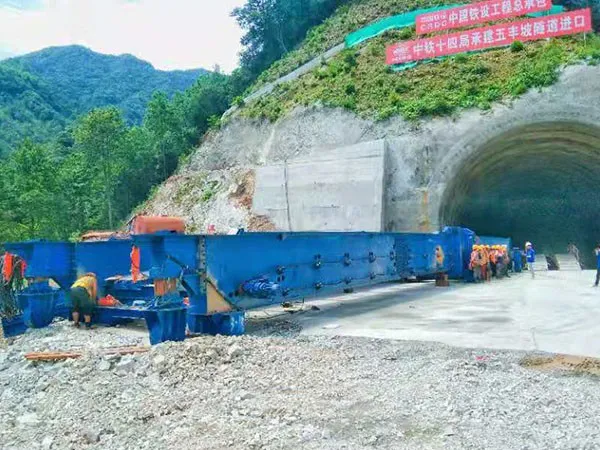"Hydraulic inverting bridge formwork" refers to specialized formwork systems used in bridge construction that utilize hydraulic power to manipulate, position, strip, and advance the formwork. The "inverting" aspect typically means that parts of the formwork (or the entire local form assembly) can be retracted, rotated, or swung away from the cast concrete to allow for easy stripping and movement to the next casting position.The primary types are distinguished by the bridge construction method they support.

Form Travelers (for Segmental Balanced Cantilever Construction):
Description: These are complex, mobile steel structures that support the formwork for casting bridge deck segments in place, typically using the balanced cantilever method. A pair of travelers works outwards from each pier.
Hydraulic Role: Hydraulics are extensively used for:
Lifting and lowering the main formwork panels (soffit, side forms, internal forms).
Adjusting the geometry and alignment of the formwork precisely.
"Inverting" or retracting form panels: Side forms often swing outwards or downwards. Soffit forms are lowered. This clears the freshly cast segment.
Advancing the entire traveler assembly along guide rails to the next casting position.
Supporting the weight of the wet concrete and the traveler itself.
Variations:
Overhead (Top) Form Travelers: The main support trusses are above the deck being cast.
Underslung (Bottom) Form Travelers: The main support trusses are below the deck being cast. The choice depends on pier height, span length, and ground access.
Movable Scaffolding Systems (MSS) / Shoring Gantries (for Span-by-Span Construction):

Description: MSS are large, self-launching gantry structures that support the formwork for casting an entire bridge span (or large portions of it) in one go. Once a span is cured, the MSS lowers the formwork and moves itself to the next span.
Hydraulic Role:
Supporting the immense weight of the full span of wet concrete and the formwork.
Lifting and lowering the main support girders of the MSS.
Operating the formwork panels: Similar to form travelers, side forms retract or swing away, and soffit forms are lowered (the "inverting" action) to strip the cast span.
Advancing the entire MSS gantry to the next pier or abutment.
Fine-tuning the alignment and level of the formwork.
Variations:
Overhead MSS: The main support girders run above the deck, and the formwork is hung from them.
Underslung MSS (Launching Girders): The main support girders run below the deck level, and the formwork is supported on top of them.
Specialized Hydraulic Panel Forms (for specific elements):
Description: While not complete "systems" like travelers or MSS, individual large formwork panels (e.g., for pier caps, complex abutments, or unique architectural features) can incorporate hydraulic cylinders for stripping.
Hydraulic Role: Primarily used for retracting or "inverting" (tilting/swinging) the form face away from the concrete, making stripping easier and faster, especially in confined spaces or for complex shapes.
Note: This is less of a distinct "type" of bridge formwork system and more a feature that can be incorporated into custom formwork solutions.

Repetition: Designed for projects with many similar segments or spans.
Speed: Hydraulic operation significantly speeds up the cycle of setting, casting, stripping, and advancing.
Precision: Hydraulics allow for fine adjustments in formwork positioning.
Safety: Reduces manual labor in hazardous positions.
Labor Saving: Automates many of the heavy lifting and adjustment tasks.
High Initial Cost: These are sophisticated systems requiring significant investment.
In summary, the main types of hydraulic inverting bridge formwork are Form Travelers and Movable Scaffolding Systems, each tailored to specific segmental or span-by-span bridge construction methodologies. The "inverting" action facilitated by hydraulics is key to their efficiency.
Gaofei
Address: 200m east of tulip garden, group 12 of zhangling community, hongshan street office, hongshan town, xigong district, Luoyang
Tel: +8616638856888
Contact: Gaofei Huang
Mobile: +86-18637923976
Phone: 0379-80881719/ 0379-60162687
QQ: 286827457
E-mail: gaofei@gf-bridge-tunnel.com